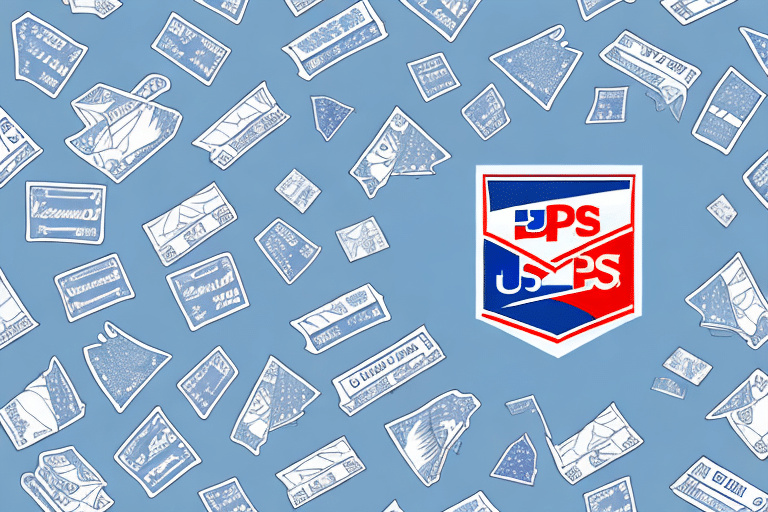Understanding USPS Small Package Rates
For entrepreneurs, small business owners, and online sellers, comprehending USPS Small Package rates is crucial for maintaining a healthy bottom line. These rates cater to packages weighing up to 70 pounds, offering a cost-effective solution for shipping within the United States. This comprehensive guide delves into USPS Small Package rates, their calculation methods, influencing factors, and strategies to optimize your shipping costs.
What Are USPS Small Package Rates?
USPS Small Package rates represent the United States Postal Service's pricing structure for shipping smaller packages domestically. These rates are determined based on several factors, including weight, dimensions, package type, and delivery distance. As of 2023, USPS Small Package rates remain the most economical choice for shipping packages up to 70 pounds, providing businesses and individuals with affordable, reliable options that include features like tracking and insurance.
One significant advantage of USPS Small Package rates is the availability of flat-rate options for specific package sizes. With flat-rate shipping, the cost remains constant regardless of the package's weight or delivery distance, making it a favorable choice for businesses that regularly ship items of consistent size and weight.
Additionally, USPS offers free package pickup services. Businesses and individuals can schedule a pickup, allowing USPS to collect packages directly from their location. This service is available for both standard and flat-rate packages, streamlining the shipping process and saving valuable time.
How USPS Small Package Rates Are Calculated
The calculation of USPS Small Package rates hinges on several key factors:
- Weight: Heavier packages incur higher shipping costs.
- Dimensions: Larger packages can lead to increased rates due to the additional space required for shipping.
- Delivery Zone: The United States is divided into different shipping zones, with rates varying based on the distance between the origin and destination. Shipping to closer zones is less expensive than to distant ones.
- Service Type: USPS offers various service levels, such as Priority Mail, First-Class Mail, and Media Mail, each with distinct pricing structures.
For example, according to the USPS Price List, the starting rate for Priority Mail begins at $9.65 for packages up to 1 pound, with incremental increases based on weight and distance. Understanding these factors allows businesses to better forecast shipping expenses and adjust their pricing strategies accordingly.
Factors Affecting USPS Small Package Rates
Several elements can influence USPS Small Package rates:
- Package Weight: Heavier packages cost more to ship.
- Package Dimensions: Larger packages may incur additional fees.
- Shipping Distance: Greater distances typically result in higher rates.
- Package Type: Different packaging options, such as boxes, envelopes, or flats, have varying costs.
- Service Level: Options like tracking and insurance can affect the overall rate.
- Seasonal Demand: Rates may fluctuate during peak periods like holidays due to increased shipping volumes.
Moreover, certain items may be subject to restrictions or prohibitions, impacting the availability and cost of shipping services. It's advisable to consult the USPS Shipping Guidelines for the most current information on shipping restrictions and rate adjustments.
USPS Small Package Rate Options
Priority Mail Express
Priority Mail Express is USPS's fastest shipping option, offering overnight delivery to most U.S. locations. This service includes tracking and insurance up to $100. It's ideal for urgent shipments, though it comes at a higher price point compared to other services.
Priority Mail
Priority Mail provides delivery within 1-3 business days, making it a suitable choice for businesses needing reliable and swift shipping without the premium cost of Priority Mail Express. It also offers tracking and insurance up to $50.
First-Class Mail
First-Class Mail is designed for lightweight packages, typically under 13 ounces. It's an economical option for sending smaller items, offering delivery within 1-3 business days along with basic tracking.
USPS Retail Ground
USPS Retail Ground is a budget-friendly option for larger and heavier packages that do not require expedited delivery. This service offers delivery within 2-8 business days and is ideal for non-urgent shipments such as books, gifts, and other sizeable items.
Choosing the Right USPS Small Package Rate
Selecting the appropriate USPS Small Package rate depends on several factors:
- Budget: Determine how much you are willing to spend on shipping.
- Delivery Timeline: Assess the urgency of your shipments to choose a service that meets your delivery requirements.
- Package Specifications: Consider the weight and dimensions of your packages to select a service that accommodates them.
- Tracking and Insurance Needs: Evaluate the level of tracking and insurance necessary based on the value and fragility of the items being shipped.
By comparing rates and services, you can identify the most cost-effective and efficient shipping option for your specific needs. Tools like the USPS Shipping Calculator can aid in this comparison by providing detailed rate estimates based on package details and desired services.
Comparison of USPS Small Package Rates vs Other Shipping Carriers
When evaluating shipping options, it's essential to compare USPS rates with those of other carriers like UPS and FedEx. USPS often offers lower rates for lightweight and standard-sized packages, making it an attractive option for small businesses and individuals. However, carriers like UPS and FedEx may provide superior tracking, faster delivery times, or better rates for heavier and larger shipments.
For instance, while USPS Retail Ground is generally more economical for heavier items, FedEx Ground might offer more competitive rates for similar packages with additional features like enhanced tracking. It's advisable to use comprehensive comparison tools such as ShipBob's Shipping Comparison to evaluate the best carrier based on your specific shipping needs and priorities.
How to Save Money on USPS Small Package Rates
Optimizing your shipping strategy can lead to significant cost savings. Here are some effective methods to reduce USPS shipping expenses:
- Accurate Packaging: Ensure your packages are correctly labeled with accurate weight and dimensions to avoid unexpected fees.
- Use Flat-Rate Options: Utilize USPS flat-rate boxes and envelopes when shipping items that fit within the flat-rate size limits, as this can be more cost-effective for heavier packages.
- Print Shipping Labels Online: Leveraging USPS's online services to print shipping labels and pay for postage can often secure discounted rates compared to retail prices.
- Compare Shipping Carriers: Regularly compare USPS rates with other carriers to ensure you are getting the best deal for your shipping needs.
- Purchase Postage in Bulk: For businesses with high shipping volumes, buying postage in bulk may qualify you for volume discounts.
Implementing these strategies can help you minimize shipping costs while maintaining efficient delivery services for your customers.
Shipping Best Practices with USPS Small Package Rates
Packing Your Items
Proper packaging is vital to ensure the safe and cost-effective delivery of your items. Use sturdy boxes or envelopes appropriate for the contents, and secure items with padding materials like bubble wrap or packing peanuts to prevent damage during transit.
Understanding the Importance of Accurate Weight and Dimensions
Accurate measurement of your package's weight and dimensions is crucial for determining the correct shipping rate. Misrepresenting these can lead to additional fees or delivery delays. Utilize reliable scales and measuring tools to ensure precision.
How to Measure and Weigh Your Packages
To accurately measure your packages, use a measuring tape or ruler to determine the length, width, and height. Record these measurements in inches and round up to the nearest whole number. For weighing, use a digital scale to get an exact weight in ounces or pounds, rounding up as necessary.
Common Mistakes to Avoid
- Inaccurate Measurements: Double-check weights and dimensions to prevent rate discrepancies.
- Poor Packaging: Avoid using inadequate materials that could lead to damaged items.
- Incomplete Addresses: Ensure that both the sender’s and recipient’s addresses are complete and legible.
- Incorrect Postage: Verify that the correct postage is applied to avoid package rejection or additional charges.
Tracking and Insurance Options
USPS offers tracking services with most shipping options, allowing you to monitor your package's journey in real-time. Additionally, purchasing insurance can provide financial protection against lost or damaged items. Assess the value of your shipments to determine the appropriate level of insurance coverage needed.
Handling Returns
Efficient return handling improves customer satisfaction and reduces costs. To manage returns effectively:
- Use a pre-paid return shipping label to streamline the process.
- Clearly communicate return policies to customers.
- Ensure that returned items are securely packaged to prevent damage during transit.
Conclusion
USPS Small Package rates offer a versatile and economical solution for shipping needs of businesses and individuals alike. By understanding how these rates are calculated, recognizing the factors that influence them, and implementing strategies to optimize shipping practices, you can enhance your shipping efficiency and reduce costs. Staying informed about the latest USPS services and comparing them with other carriers ensures that you make the most cost-effective and reliable shipping choices for your specific requirements.






















